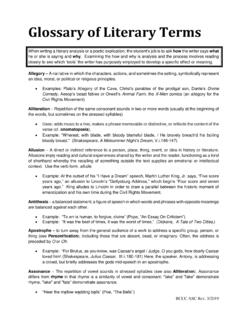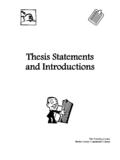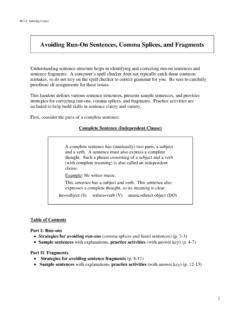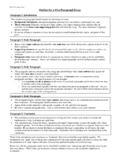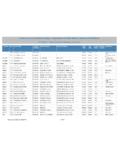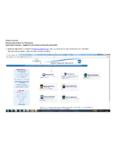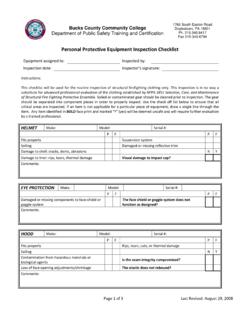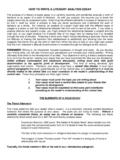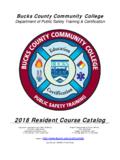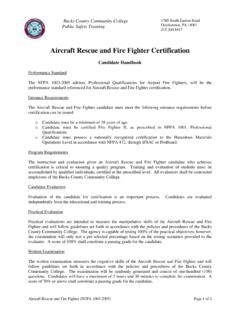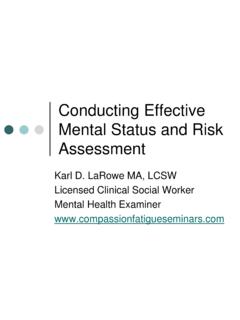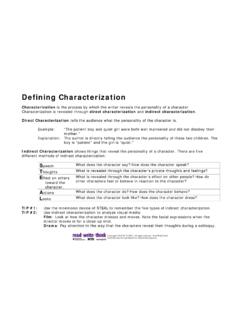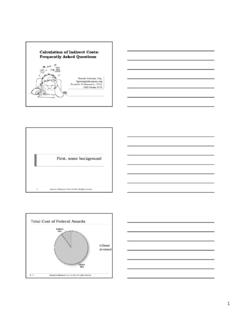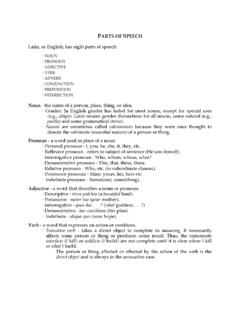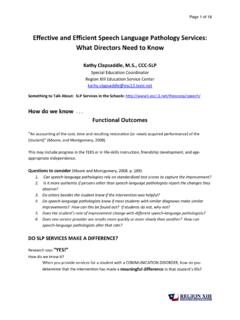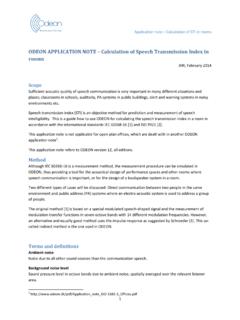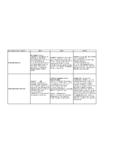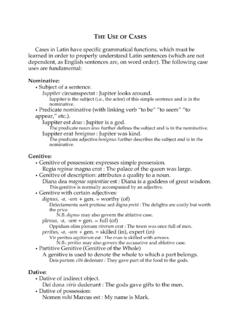Transcription of PARTS OF SPEECH ADJECTIVE: Describes a noun or pronoun ...
1 PARTS OF SPEECH . ADJECTIVE: Describes a noun or pronoun ; tells which one, what kind or how many. ADVERB: Describes verbs, adjectives , or other adverbs; tells how, why, when, where, to what extent. CONJUNCTION: A word that joins two or more structures; may be coordinating, subordinating, or correlative. INTERJECTION: A word, usually at the beginning of a sentence, which is used to show emotion: one expressing strong emotion is followed by an exclamation point (!);. mild emotion followed by a comma (,). noun : Name of a person, place, or thing (tells who or what); may be concrete or abstract; common or proper, singular or plural. PREPOSITION: A word that connects a noun or noun phrase (the object) to another word, phrase, or clause and conveys a relation between the elements.
2 pronoun : Takes the place of a person, place, or thing: can function any way a noun can function; may be nominative, objective, or possessive; may be singular or plural;. may be personal (therefore, first, second or third person), demonstrative, intensive, interrogative, reflexive, relative, or indefinite. VERB: Word that represents an action or a state of being; may be action, linking, or helping; may be past, present, or future tense; may be singular or plural; may have active or passive voice; may be indicative, imperative, or subjunctive mood. FUNCTIONS OF WORDS WITHIN A SENTENCE: CLAUSE: A group of words that contains a subject and complete predicate: may be independent (able to stand alone as a simple sentence) or dependent (unable to stand alone, not expressing a complete thought, acting as either a noun , adjective, or adverb).
3 CONJUNCTION: A word that joins two or more elements. (See PARTS OF SPEECH ). DIRECT OBJECT: the noun that receives the action of the verb. INDIRECT OBJECT: The noun that names the person or thing for whom or to whom the action of the verb is directed; cannot be present without a direct object; will precede the direct object in the sentence. MODIFIER: A descriptive word, usually an adjective or adverb or any phrase or clause functioning as an adjective or adverb. OBJECT OF A VERBAL: A noun that receives the action of a verbal (infinitive, participle, or gerund). PHRASE: A group of words that does not contain a subject and predicate and acts as one unit as a part of SPEECH ( noun phrase, verb phrase, prepositional phrase, verbal phrase). PREDICATE: The main verb of a sentence (including helping verbs) plus its modifiers, objects, and/or complements.
4 PREDICATE ADJECTIVE: An adjective that follows a linking verb (state of being verb) and renames the subject of the sentence. PREPOSITIONAL PHRASE: A group of words beginning with a preposition and ending with a noun (the object) and used as an adjective or an adverb. SENTENCE: A group of words containing a subject and a predicate and conveying a complete thought or idea: may be simple (one independent clause), compound (two or more independent clauses), complex (one independent and one or more dependent clauses), or compound/complex (two or more independent clauses and one or more dependent clauses. SHOW POSSESSION: The function that allows a word to show ownership; nouns show possession by adding S (or if the word normally ends in s, just an apostrophe).)
5 Pronouns have possessive forms and do not contain apostrophes. SUBJECT: The noun or pronoun that performs the action of the verb, is acted upon by the verb, or is described by the verb. SAMPLE SENTENCE PATTERNS. Mary is pretty. S V Mary is my mother. S V John hit the ball. S V John gave Mary some flowers. S V John and Bill played baseball. S S V (Compound Subjects). John read and studied his math book. S V V (Compound Verbs). Mary cried all afternoon. S V adverb
